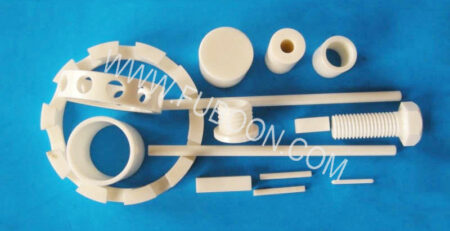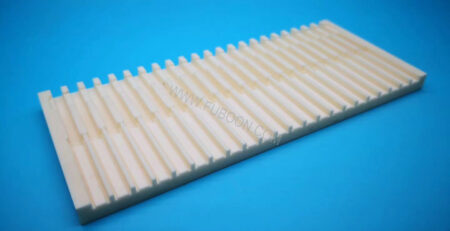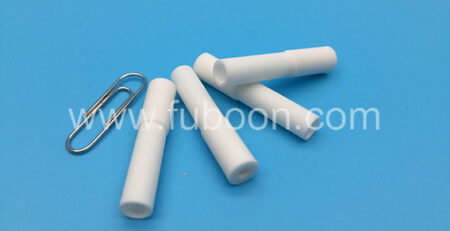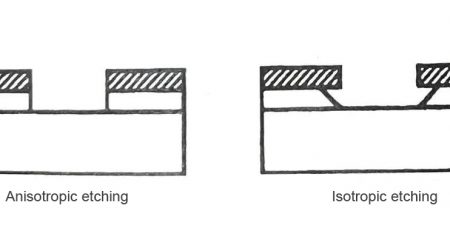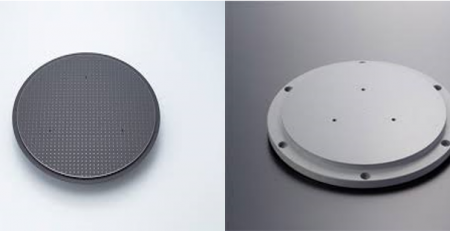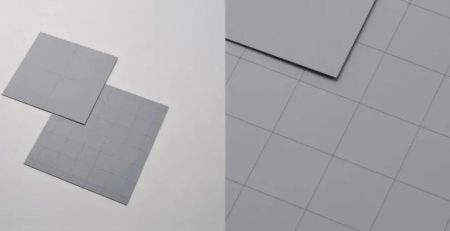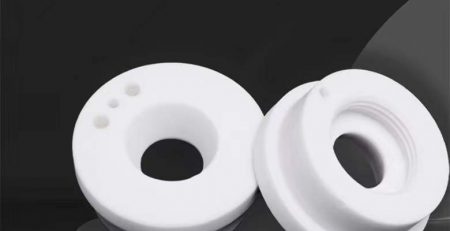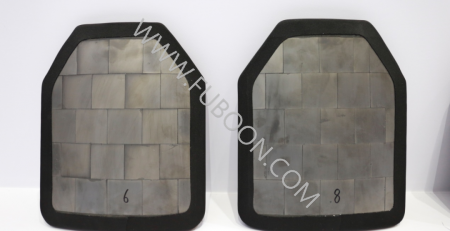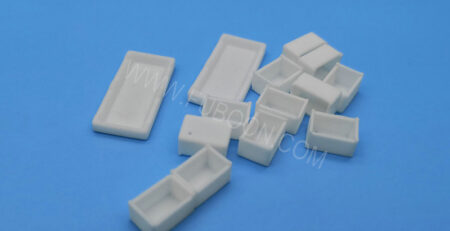Many sintered body materials mainly composed of oxides are widely used in the production of electronic functional components. The manufacturing process of electronic ceramics is roughly the same as that of traditional ceramics.
Electronic ceramics, or ceramics for the electronics industry, are fundamentally different from general ceramics for electric power in terms of chemical composition, microstructure and electromechanical properties. These differences are formed by a series of special technical requirements put forward by the electronics industry for electronic ceramics, the most important of which is to have high mechanical strength, high temperature and humidity resistance, radiation resistance, and a wide range of dielectric constants. The dielectric loss tangent value is small, and the capacitance temperature coefficient can be adjusted (or the capacitance change rate can be adjusted). High electric strength and insulation resistance, and excellent aging performance.
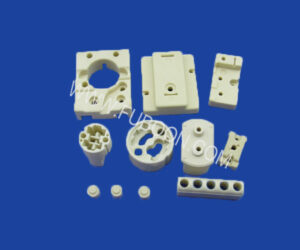
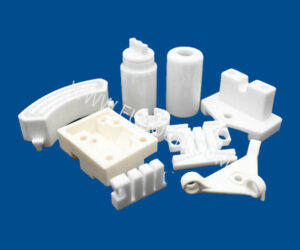
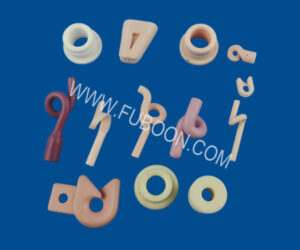
Electronic ceramics can be divided into five categories according to their functions and uses: insulating ceramics, capacitor ceramics, ferroelectric ceramics, semiconductor ceramics and ion ceramics.
Insulation device ceramics
Referred to as device porcelain, it has excellent electrical insulation properties and is used as electronic ceramics for structural parts, substrates and casings in electronic equipment and devices. Insulation device porcelain includes various insulators, coil frames, tube holders, band switches, capacitor support brackets, integrated circuit substrates and packaging shells. The basic requirements for this type of porcelain are low dielectric constant ε, small dielectric loss tanδ, high insulation resistivity ρ, high breakdown strength E, and good dielectric temperature characteristics and frequency characteristics. In addition, higher mechanical strength and chemical stability are also required.
Among these types of ceramics, talc porcelain and alumina porcelain are the most widely used. Their main crystalline phase components are and respectively. Talc porcelain has excellent electrical insulation and low cost, and is a typical high-frequency device porcelain used in radio frequency bands. Alumina porcelain is a kind of high-frequency, high-temperature and high-strength device porcelain with better electrical insulation. Its electrical and physical properties increase with the increase of aluminum oxide content. Commonly used are high alumina porcelain containing 75%, 95%, and 99% alumina. In some highly demanding integrated circuits, even pure corundum porcelain with an aluminum oxide content of 99.9% is used, whose properties are similar to sapphire single crystals. The disadvantages of high alumina porcelain, especially pure corundum porcelain, are difficulty in manufacturing, high firing temperature and high price.
There is also a type of high thermal conductivity porcelain represented by beryllium oxide (BeO) in the device porcelain. The room temperature thermal conductivity of beryllium oxide porcelain containing BeO95% is the same as that of metal. Beryllium oxide also has good dielectric properties, temperature resistance and high mechanical strength. The disadvantage is that the raw material of BeO is very toxic, and the ceramic material has a high firing temperature, which limits its application. Boron nitride (BN) porcelain and aluminum nitride (AlN) porcelain are also high thermal conductivity porcelains. Although their thermal conductivity is not as good as that of beryllium oxide porcelain, they are non-toxic, processability and dielectric properties are good, and can be used for high-frequency and high-power transistors. Used for heat dissipation and insulation in large-scale integrated circuits.
Developed a kind of hot-pressed ceramics with SiC as the base material and doped with a small amount of BeO and other impurities. This kind of ceramic has excellent insulation properties, and its thermal conductivity is higher than that of beryllium oxide porcelain with a purity of 99%. Its thermal expansion coefficient is close to that of silicon single crystals in a wide temperature range, and is expected to be used in large-scale integrated circuits with large power dissipation.
Low-alkali feldspar porcelain, which is used as the matrix of carbon film and metal film resistors, is also an important and inexpensive device porcelain, but its dielectric loss is large and it is not suitable for use at high frequencies.
Capacitor ceramics
Electronic ceramics used as capacitor dielectrics. This type of ceramics has the largest consumption and the largest variety of specifications. The main ones are high-frequency and low-frequency capacitor ceramics and semiconductor capacitor ceramics.
High-frequency capacitor porcelain belongs to class I capacitor porcelain, mainly used to manufacture high-stability ceramic capacitors and temperature compensation capacitors in high-frequency circuits. The main components of this type of ceramics are mostly alkaline earth or rare earth metal titanates and solid solutions based on titanate (Table 1).
Electronic ceramics
The selection of different ceramic components can obtain high-frequency capacitor ceramics with different dielectric constants, dielectric loss tangent tanδ and dielectric temperature coefficient αε to meet the needs of various temperature compensation. The barium tetratitanate porcelain in the table is not only a capacitor dielectric with high thermal stability, but also an excellent microwave dielectric material.
Low-frequency capacitor porcelain belongs to class Ⅱ capacitor porcelain, which is mainly used to manufacture ceramic capacitors for bypass, DC blocking and filtering in low-frequency circuits. The main features are high dielectric constant ε, large loss tangent, and large rate of change of tanδ and ε with temperature. The most widely used of this type of ceramics is the ferroelectric barium titanate (BaTiO3) as the main component, which is obtained by doping modification with high ε (up to 20000 at room temperature) and low ε temperature change rate. Low-temperature sintered low-frequency monolithic capacitor ceramics mainly composed of gentle phase change ferroelectric lead magnesium niobate (PbMg1/3Nb2/3O3) are also important low-frequency capacitor ceramics.
Semiconductor capacitor ceramic The insulating layer formed on the outer surface of the semiconductorized ceramic or the inner surface (grain boundary) between the crystal grains is an electronic ceramic that is the capacitor dielectric. Among them, the boundary layer capacitor made by using the dielectric properties of the ceramic grain boundary layer is a new type of high performance and high reliability capacitor, which has small dielectric loss, high insulation resistance and high working voltage. The apparent dielectric constant of this ceramic is extremely high (up to 105), low dielectric loss (less than 1%), high volume resistivity (higher than 1011 ohm·cm), and high dielectric dispersion frequency (above 1 GHz) ), good moisture resistance, is a high-performance, high-stability capacitor medium. Ferroelectric ceramics Electronic ceramics with ferroelectric crystals as the main crystal phase. There are no fewer than a thousand kinds of ferroelectric crystals that have been discovered, but as the main crystal phase of ferroelectric ceramics, there are mainly perovskite or quasi-perovskite type ferroelectric crystals or solid solutions. In a certain temperature range, there is spontaneous polarization in the crystal that can change its direction with the applied electric field. This is the ferroelectricity of the crystal. When the temperature exceeds a certain critical value ─ ─ Curie temperature TC, its polarization intensity drops to zero, the crystal loses ferroelectricity, and becomes a normal paraelectric crystal; at the same time, the crystal undergoes a ferroelectric phase to a paraelectric phase Phase change. The polarization intensity of ferroelectrics also changes drastically with the electric field.
Electronic ceramics
An important microscopic feature of ferroelectrics is the electrical domain structure, that is, ferroelectrics have many small regions that are spontaneously polarized to saturation in a specific direction ─ ─ electrical domains. These domains with different orientations are separated by domain walls. Under the action of a relatively strong external electric field, this multi-domain crystal can be forced to be oriented by the electric field and become single-domain. This kind of dynamic process in which electric domains reverse their orientation with an external electric field, including the movement of domain walls and the nucleation and growth of new domains.
Ferroelectric ceramics
Multi-functional and versatile. Using its piezoelectric properties can be made into piezoelectric devices, which is the main application of ferroelectric ceramics, so ferroelectric ceramics are often referred to as piezoelectric ceramics. Using the pyroelectric characteristics of ferroelectric ceramics (the effect of releasing charges on the surface of the ferroelectric body due to the change in the polarization intensity when the temperature changes) can be made into infrared detectors, which can be used in temperature measurement, temperature control, remote sensing, and Biology, medicine and other fields have important application value. Typical pyroelectric ceramics include lead titanate (PbTiO3) and so on. Utilizing the strong electro-optical effect of transparent ferroelectric ceramic PLZT (lanthanum-doped lead zirconate titanate) (the optical properties of the transparent ferroelectric ceramic are changed by the control of the domain state of the transparent ferroelectric ceramic by an external electric field, thereby exhibiting electronically controlled birefringence and electronically controlled light The effect of scattering) can be made into new devices such as laser modulators, photoelectric displays, optical information storage, optical switches, photoelectric sensors, image storage and displays, and laser or nuclear radiation protective glasses.
Semiconductor ceramics
Electronic ceramics that have semiconducting crystal grains and insulating (or semiconducting) grain boundaries through semiconductorization measures, thereby presenting strong interface barriers and other semiconductor characteristics.
There are two main methods of ceramic semiconductorization: forced reduction method and donor doping method (also known as atomic valence control method). Both methods are to form defects such as ionic vacancies in the ceramic crystals, thereby providing a large number of conductive electrons, so that the crystal grains in the ceramics become a certain type (usually N-type) semiconductor. The interlayer between these crystal grains is an insulating layer or another type (P-type) semiconductor layer.
There are many types of semiconductor ceramics, including various negative temperature coefficient thermistors made of the nature of the crystal grains in semiconductor ceramics; semiconductor capacitors made of grain boundary properties, ZnO varistors, and BaTiO3 series positive temperature coefficient thermistors Resistors, CdS/Cu2S solar cells; and various ceramic humidity-sensitive resistors and gas-sensitive resistors made of surface properties. Table 2 lists typical semiconductor ceramics for sensors.
CdS/Cu2S photoelectric ceramics are different from the semiconductor ceramics listed in the above table that use the properties of the insulating grain boundary layer. It uses the photovoltaic effect of the PN heterojunction between the N-type CdS and the P-type Cu2S grain boundary layer. The ceramic solar cell made with it can be used as a power source for unattended stations and as a photoelectric coupling device in electronic instruments.
Ionic ceramics
Electronic ceramics with fast ion conductivity. It has the characteristics of fast delivery of positive ions. The typical representative is β-Al2O3 porcelain. The ionic conductivity of this kind of ceramic can reach 0.1/(ohm·cm) at 300℃, which can be used to make more economical solid batteries with high energy ratio, and can also make slow discharge capacitors with high energy storage density. It is a material that helps solve energy problems.
By FUBOON Advanced engineer team.

